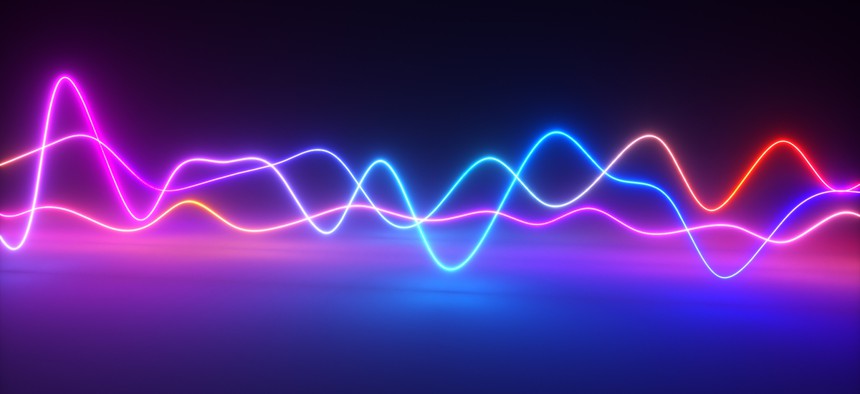Army-Built Quantum Sensor Can Detect Wi-Fi, Bluetooth and Other Signals

FlashMovie/Shutterstock.com
The device can sample the complete radio spectrum—and fits into the Army’s vision for high-tech modernization.
Army researchers produced a quantum sensor that can detect the complete radio spectrum—and pick up Bluetooth, Wi-Fi, AM and FM radio and other communication signals on frequencies up to 20GHz.
The device could pave the way for next-level capabilities to support electronic warfare of the future, but not before more engineering- and physics-based work unfolds.
“This research still has many basic and foundational scientific questions to address before it’s ready to deploy to the field,” Paul Kunz, a researcher at the Army Research Laboratory told Nextgov via email Tuesday. Alongside Army researchers David Meyer and Kevin Cox, Kunz co-authored a paper on the research findings, which was published by a peer-reviewed journal last month.
Quantum science and technologies hinge on happenings at the atomic scale. Kunz noted that he and the team had been investigating Rydberg atoms “as qubits for building a quantum repeater” that could potentially distribute entanglement over long distances. Quantum entanglement is considered fundamental for enabling the power of quantum computing and some quantum sensing.
“In the course of this research, we realized that Rydberg atoms could be a fascinating new form of electric field sensor with radically different properties than traditional field sensors,” Kunz explained.
The device they designed had two main components, according to the researcher: lasers, and a small glass cell containing atoms. In their experiments, lasers are used to excite rubidium atoms into desired Rydberg states and to readout atoms’ response to the electric field they aim to sense.
“In this latest work, we’ve added another new important component: a specially designed waveguide circuit that concentrates the field under test and allowed us to greatly improve the sensitivity over all prior results,” Kunz said.
The atoms involved interact with the circuit’s electric fields and help to expose faint signals received into it.
Prior demonstrations of Rydberg atomic sensors centered on small, specific regions of the radio frequency spectrum, but the Army’s new tool can be applied over a wide frequency range for the first time, according to its press release.
“This broad coverage in addition to the potential for unprecedented precision opens many avenues to explore in terms of new applications,” Kunz said. Those could include military-focused innovations in communications and sensing, spectrum awareness and more.
“This is a really important step toward proving that quantum sensors can provide a new, and dominant, set of capabilities for our soldiers, who are operating in an increasingly complex electromagnetic battlespace,” co-author Cox noted in the Army's release.
The work meshes well with the military branch’s vision for high-tech modernization, but both collaborators emphasized that there’s more to be done before it’ll be fieldable.
“There is still room for improving the sensitivity,” Kunz said. “We have shown theoretically that this sensor should be able to perform with noise levels below the thermal limit—a capability that is absolutely impossible with traditional sensor technology.”
Going forward, they intend to boost the device’s performance and reduce its power consumption and size.
“[T]here are many foundational scientific questions still to answer, and we will continue to push this technology and explore the limits of its capabilities,” Kunz said.






